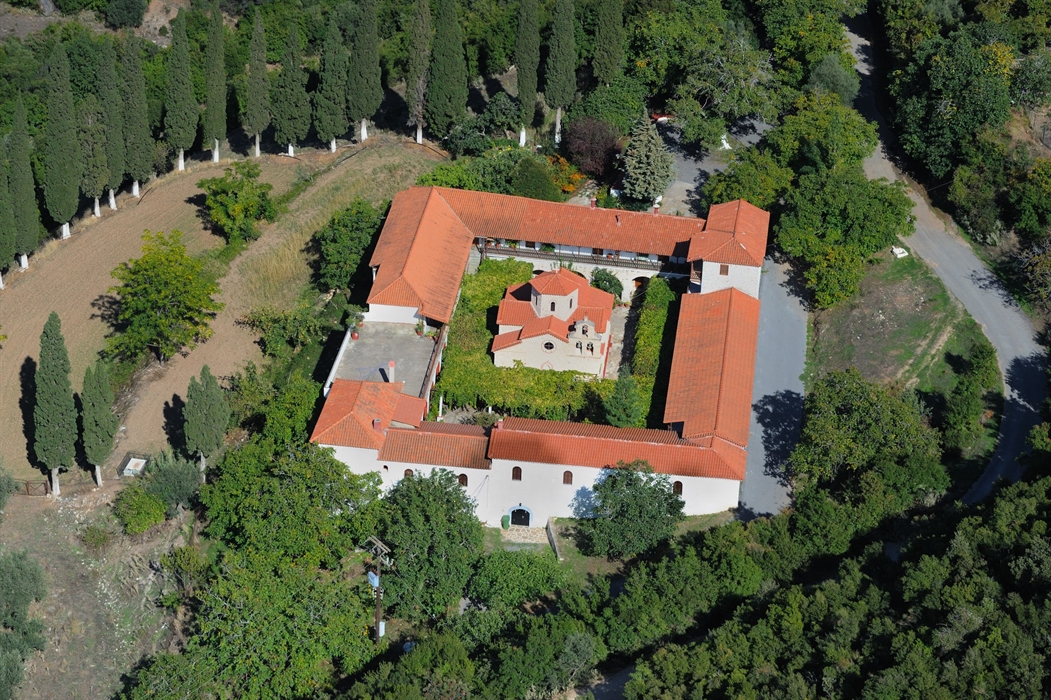Prastos is a beautiful mountain village in a lovely setting of chestnut and fir forests which now has no permanent inhabitants. Most of the houses are well-kept, and many of them are holiday homes owned by people who live in the nearby village of Agios Andreas.
Prastos is a beautiful mountain village in a lovely setting of chestnut and fir forests which now has no permanent inhabitants. Most of the houses are well-kept, and many of them are holiday homes owned by people who live in Agios Andreas (20 km.) This means the village comes to life when people arrive for holidays, and for various events such as the 1st Tsakonia Festival which was held in 2022. However, the village has an illustrious history.
It was the capital of Tsakonia from the Middle Ages onwards, and in the 18th and 19th century around 7,000 people lived here. It had an important commercial-economic centre and was also the seat of the Diocese of Reontos Prastou with thirty churches, three monasteries, two castles and several tower houses. So why was it deserted? Well in 1826 the village was burnt down by Ibrahim Pasha of Egypt in retaliation for the significant help it had given to the Greek fighters in the 1821 War of Independence.
If you take a walk around the village it is easy to imagine what it was like in days gone by. There are quite a few tower houses, and in particular the Sarantaris (1722), Kalimeris and Karamanos (1788) towers are imposing fortified houses with small windows and an arched front door.
Panagia church which was built in 1762 once dominated Prastos, but today it is in ruins. The oldest church was Agios Athanasios which dated from the 15th century. The 1732 Byzantine style Taxiarches church escaped the fire but was later vandalised.
The oldest monastery in Tsakonia is the Orthokosta (οr Artokosta) Monastery, which is actually two monasteries dedicated to the Virgin Mary - the current one and the ruined Byzantine one which is 3 km away (also called Kato Panagia.) The newer monastery was founded in 1617, when the monks from Kato Panagia moved higher up the hillside. It was protected by a strong tower on the southeast side, which was renovated together with the cells in 1727. In 1826 the monastery was set on fire by Ibrahim as, like so many other monasteries in the Peloponnese, it played a part in the insurrection against Turkish rule. The main church was destroyed in the fires and rebuilt in 1864. It is dedicated to the Assumption of the Virgin Mary and has icons from the church in the old monastery and a wonderful floor which dates back to 1627. The icon of the Virgin Mary is important both as a Byzantine work of art, and as a piece of historical evidence.
Did you know that
Prastos is 650m above sea level on the slopes of Mount Parnon.
It is about 70 km from Tripoli.
Find the destination on the interactive map below. Open on Google Map.
Σχετικό περιεχόμενο χρηστών (UGC)
Ενημερωθείτε για ενδιαφέροντα θέματα γύρω από τον προορισμό μέσα από το περιεχόμενο των χρηστών μας
Newsletters
- About Us
- FAQ's
- Map
- Tourism Information Centers
- Disclaimer
- Sitemap
- Our Brand
- Media Room
- Add your Business
- Corporate
- MICE

Peloponnese. The land of impossible beginnings





Design and creation from Cosmote
Marinas and Moorings
Diving Centers
Get Inspired
- Media Gallery
- Peloponnese Travel Blog
- The Peloponnese in the Media
- Your Feedback
- Users' General Content
- Users' Local Products
- Users' Events Content
- Ask a Local
More
- My peloponnese vibe
- Our providers Network
- Destinations Map
- Weather
- Public Transport
- Frequently Asked Questions
- Useful Phones
- B2B
- Destination Statistical Data
- Contact



